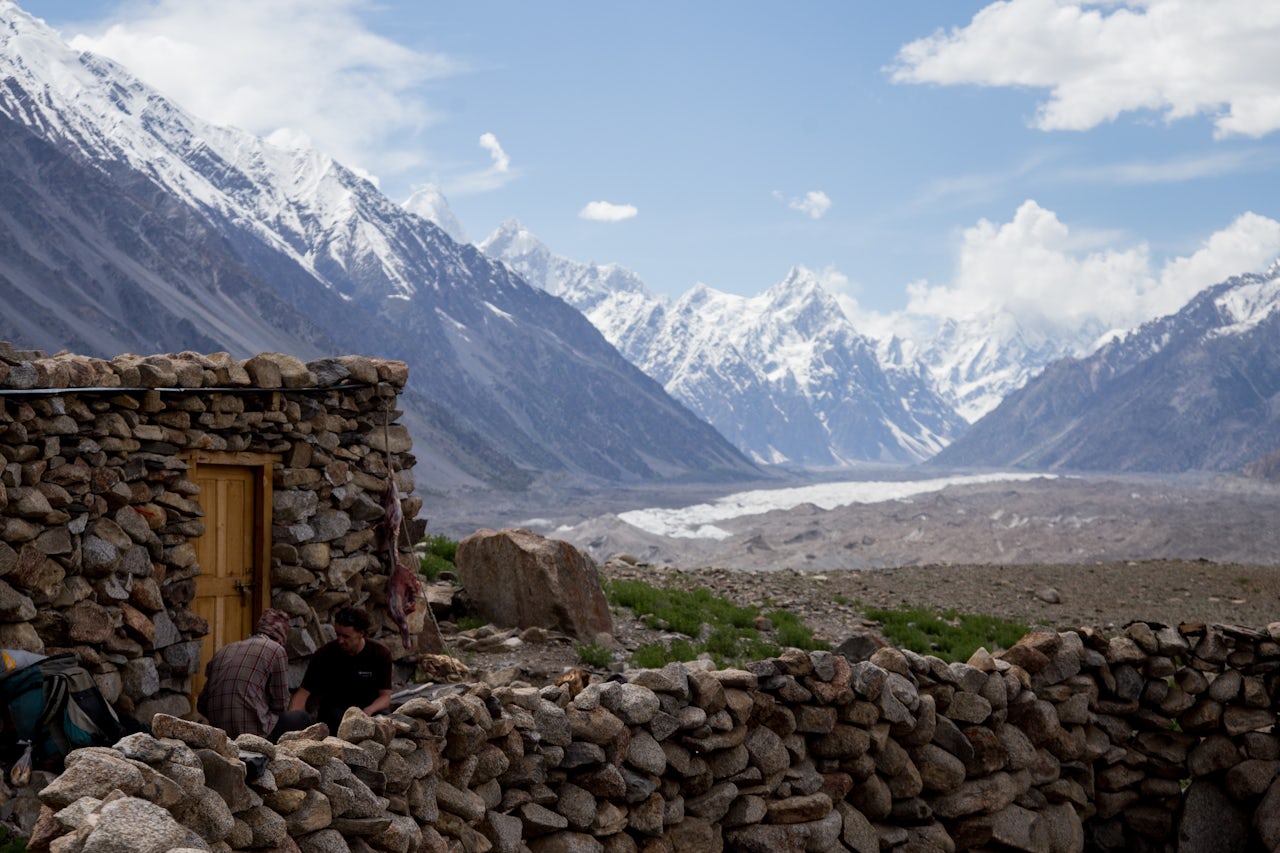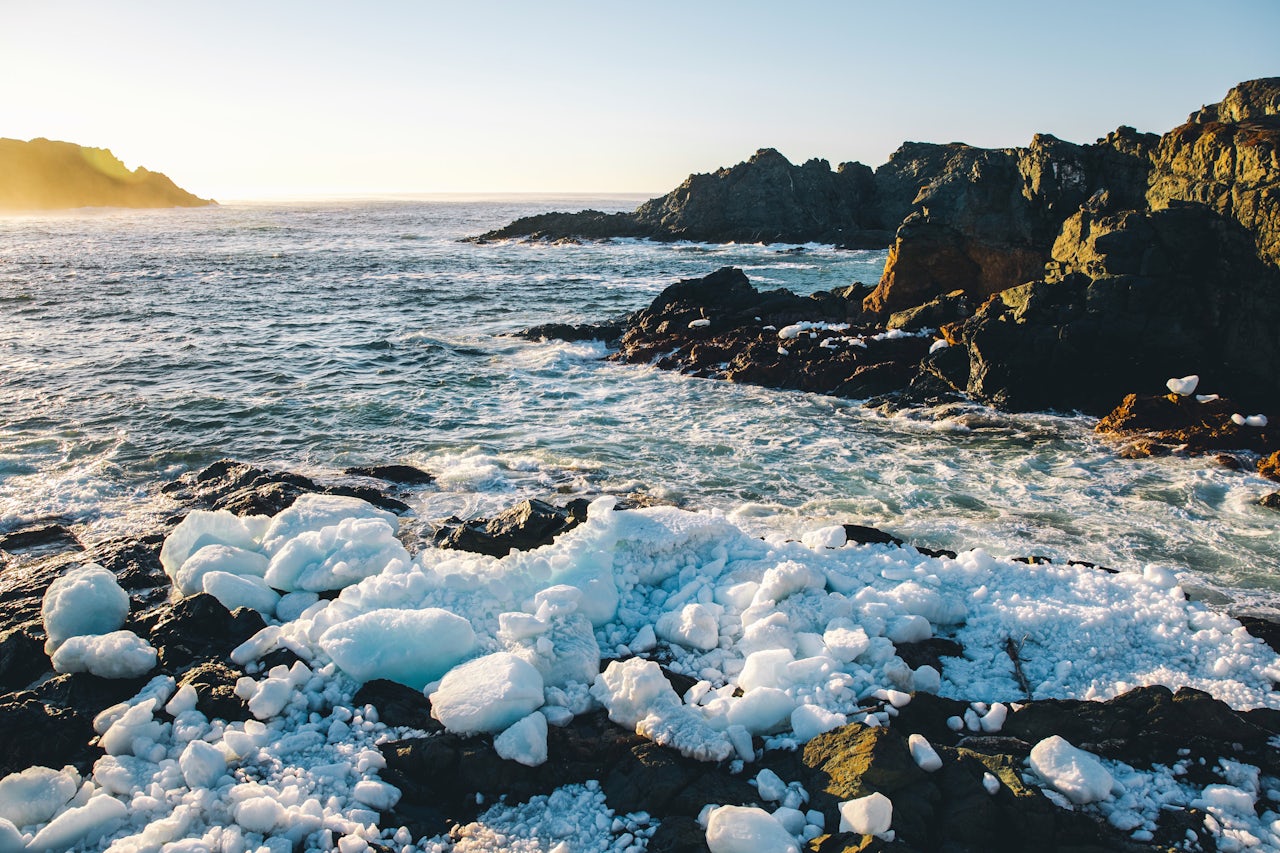Perched up on a viewpoint in Pakistan’s Karakoram mountains, Junaid Akhter looked out over a wide river that pours out of a glacier and winds through a valley to his village.
“I remember this glacier used to come out much further,” he said, pointing to a spot hundreds of meters from where the Batura Glacier, one of the longest in the world, ends today. “It has moved further back.”
Akhter, a 24-year-old student and trekking guide from the northern Pakistani province of Gilgit-Baltistan, has been coming to this valley, lined with peaks taller than 23,000 feet, since he was a child. His village, Passu, relies on the Batura Glacier as their main source of water. In the summers, they trek alongside it to reach high-altitude summer pastures, where their animals graze on fields that only exist because of meltwater. In their village, the glacier is the only reason why their land isn’t a barren desert.
But the climate in Passu is changing, and the glaciers that sustain life in its region are at risk. On the north side of the village, meltwater from glaciers has increased to the point where large portions of the village are at risk of being eroded away. This summer, an entire hotel was swallowed into a river bed because of erosion.
Yet on the south side of town, another glacier is growing so quickly that it will likely engulf and destroy the village���s only major highway by next year, according to locals who help scientists observe moving glaciers. Some glacier movement destroys centuries-old irrigation channels, which are the only thing that provides enough water to keep countless isolated valleys habitable.
Earlier this year, scientists throughout the region published a climate change report called the Hindu Kush Himalaya Assessment about the rate of melting in glaciers in the Himalayan region, which made global headlines and brought to light that two-thirds of ice in the region could be gone in the next 100 years if global emissions stay at current levels. The group of mountain ranges, dubbed the Hundu Kush Himalaya region, runs from Afghanistan to Burma and is home to the largest mass of ice outside the polar regions.
The rivers that stem out of these glaciers are the source of water for billions of people in India, China, and other densely populated countries in Asia. The region is expected to be hit by flooding from increased meltwater in coming decades, only to be followed by mass water shortages in around 50 years when glaciers become too small.
The Karakoram mountains in Pakistan hold a large chunk of the glaciers mentioned in the climate report. While it will still be decades before water challenges affect move heavily populated cities away from the mountains, life in the villages and cities in Pakistan’s north is already being disrupted.
Amanullah Khan has lived in Passu for over five decades, and has worked as a volunteer emergency responder to natural disasters and as a glacier researcher. He says that one unique factor about glaciers in the Karakoram mountains is how unpredictable they are. While many glaciers are indeed melting, others are surging forward for reasons still not entirely clear to scientists.
For the last year, a large glacier has moved quickly towards the highway in a village south of Passu. Khan says it could be a little more than a year before the road is entirely covered. Alongside the road is a major irrigation channel that would also be destroyed.
“When irrigation lines are cut, people go totally without water, and then they have to scramble to fix them,” Khan said.
“Our people can’t wait for the government or a non-government organization to come in and fund this work. They voluntarily start trying to finish the work themselves as quickly as possible to save their land.”
Many residents in the Hunza Valley, one of the most populated regions in Pakistan’s northern province, went without water from their irrigation channels for three weeks this summer after glacier movement and rockslide destroyed the infrastructure, said Hanniah Tariq, CEO for High Altitude Sustainability, an organization promoting sustainable tourism in Pakistan’s mountains. “All of this is happening because of receding glaciers,” she continued.
The region’s complex system of irrigation channels, which are organized by gates that operate like lane switchers on a railroad, are the only reason why 65,000 people can live in a group of cities and villages there.
The system is already complicated enough that, according to one guidebook in the area, the majority of local court cases are about water disputes between landowners.
The problem for people in Pakistan’s north is that climate change simply isn’t on the forefront of people’s minds in the rest of the country. The government is mired in a number of other headline-grabbing issues, like conflict in Kashmir and the return of polio. That water shortages might have an impact on major cities in the coming decades simply doesn’t register in the minds of most Pakistani people.
“A lot of times when I try to fundraise in Karachi, for example, people don’t want to engage with the issue,” Tariq said. “I give presentations to potential donors, and people often ask things like, ‘there’s children dying in Thatta and you care about some glacier in Baltistan? We don’t get it.’"
But it won’t be too long before residents in Karachi, a city of 14 million situated on the country’s southern coast, could feel the effects of melting glaciers too. The Indus River, which receives much of its water from glaciers, flows through Karachi before draining into the Arabian Ocean.
“The role of glaciers in the Indus river is significant,” Mohd Farooq Azam, an assistant professor at the Indian Institute of Technology who has been studying glaciers in the Himalaya for more than a decade, told me.
Nearly half of the water in the Indus comes from Himalayan and Karakoram glaciers during peak melting periods, he said.
“In the next 50 years, there will be more and more water in these rivers,” he explained. “But after a certain point, we’ll have less and less glacier melt because of the smaller volume of the glaciers. First we will have floods, then we will have droughts.”
Roughly the population of the entire U.S. lives along the Indus River basin, according to an estimate by the United Nations Food and Agriculture Organization. It’s only one of 10 major rivers in Asia where droughts will have devastating effects on up to three billion people when meltwater begins to decrease, according to the Hindu Kush Himalaya Assessment.
In Ladakh, a city in the Indian-controlled portion of Kashmir at the northern borders of India and Pakistan, glaciers are relatively small and have mostly melted away already. Ladakh’s unique situation means residents are already feeling similar drought situations that can be expected in most of the region later.
“They’re having a water crisis during pre-summer seasons,” Azam said. He added that they are limited to just one crop cycle in a growing season, where before they could do two.
“It’s a possibility if there’s a serious scarcity for water that they have to leave down the line in 50 to 100 years.”
Back in Passu, locals can’t imagine ever having to worry about shortages. Azam said it can be easy to ignore looming water issues.
In the meantime, other effects of climate change keep presenting themselves. Khan, the climate study volunteer, said that it’s more common for farmers to killed by rockfall, which is triggered by moving glaciers and increased precipitation; rockfall can even be evident after a heavy rain. In Karimabad, one historic trekking route that led to a centuries-old farming area was permanently closed after a landslide made the area unstable a couple years back.
And this summer, Passu’s farmers noticed that their fruit harvests were rotting due to variable weather.
“From the outside, their crops look fine, but from the inside, they’ll be black and rotten,” Khan said, who blamed wild variances in temperature and rain during the summers.
For some villages, the combination of landslides, irrigation channel damage, and changing weather has already caused people to migrate.
“An entire village got wiped out four or five years ago,” Tariq said, citing severe damage to irrigation channels as the main cause.
People like 24-year-old Akhter will have to make decisions over whether staying where they grew up is feasible.
“Every year the water is cutting a bit of the village,” he said. “There could be a time when most of the people will be settling down in the cities.”






